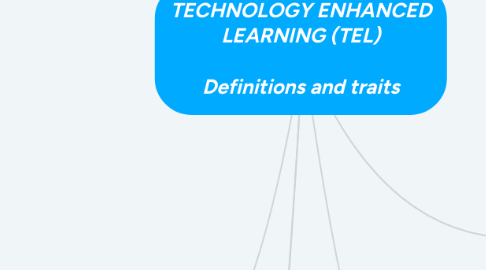TECHNOLOGY ENHANCED LEARNING (TEL) Definitions and traits
Emilija Kisnieriuteにより


1. TEL is a synonym for distance learning
1.1. Distance learning is used to describe a programme that is delivered through the use of technology to students who are not physically located, for example, at the University. Geographic separation is inherent in distance learning, and time may also separate students and teachers. Accessibility and convenience are important advantages of this mode of education. Most often, electronic communications, such as e-mail, are used, but traditional forms of communication, such as the postal system, may also play a role.
1.2. The trait of distance learning: Distance learning is by definition carried out through institutions. It is not self-study or a nonacademic learning environment.
2. TEL is a synonym for mobile learning
2.1. Mobile learning is related to mobile equipment and its proliferation, consequently, to the growth of possibilities to use these mobile devices and medium which is natural for increasing generations of youth.
2.2. The trait of mobile learning: Learner, teacher, environment, content and assessment are basic elements of the complete mobile learning, ubiquitous, portable size of mobile tools, blended, private, interactive, collaborative, and instant information.
3. TEL is a synonym for computer mediated communication
3.1. CMC is examined and compared to other communication media through a number of aspects thought to be universal to all forms of communication, including (but not limited to) synchronicity, persistence or "recordability", and anonymity. It is a process in which human data interaction occurs through one or more networked telecommunication systems. A CMC interaction occurs through various types of networking technology and software, including email, Internet Relay Chat, instant messaging, Usenet and mailing list servers.
3.2. The trait of CMC: It is the impression formation, deception, group dynamics, disclosure reciprocity, disinhibition and especially relationship formation.
4. For example:
4.1. • TEL can refer to technology-enhanced classrooms (which in turn can mean either a classroom with hardware or ICT use in classroom teaching)
4.1.1. • TEL can mean learning with technology (with cognitive tools) as opposed to learning by/through technology.
4.1.1.1. • TEL can express an attitude in favor of "seamless" (or integrated) interactive learning environments as opposed to content-driven SCORM-like e-learning environments. As example see: One-to-one TEL or technologies used in project-oriented instructional designs or CSCL designs.

